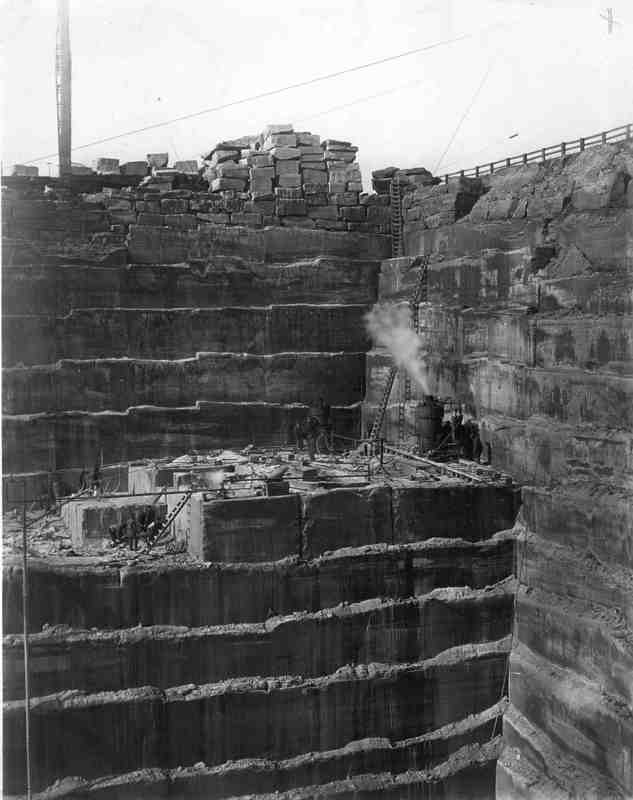Amherst's Quarries

Is Amherst really the "Sandstone Center of the World?" In fact, it is, but it should share its title with South Amherst. Both Amherst and South Amherst have a vast amount of sandstone quarries. Not surprisingly, Amherst sandstone feels rough and gritty. After all, sandstone literally contains sand.
The first Amherst settlers in the early 1800s used the sandy rock to form grist mills and saw mills. Jacob Shupe was the first resident to build a grist mill on Beaver Creek and became quite wealthy using his sandstone grindstones. Not until 1847 did quarrying sandstone become big business in Amherst. A Canadian industrialist named John Worthington developed the first quarry using techniques developed by John Baldwin in Berea. Over the years several dozen quarry companies developed on the various quarries within Amherst and South Amherst. Large scale quarrying brought railroads through Amherst. It also contributed to an increase in the population. In 1830, Amherst's population was 552, growing to 2,482 by 1870. By 1924, most of the smaller companies had been bought out by the Cleveland Quarries Company (CQC) which still owns the majority of the local quarries today.
By the 1950s sandstone was used less widely as building material for homes and buildings. The CQC therefore ran an advertising campaign promoting the use of sandstone in the steelmaking process for linings in furnaces and ladles. For a while, CQC provided three fourths of U.S. steel manufacturers with their sandstone. Because of low demand, however, CQC shut down operations in 1992. It reopened later in the decade but now conducts only a fraction of the amount of work that it had in the past.
Audio
Images








